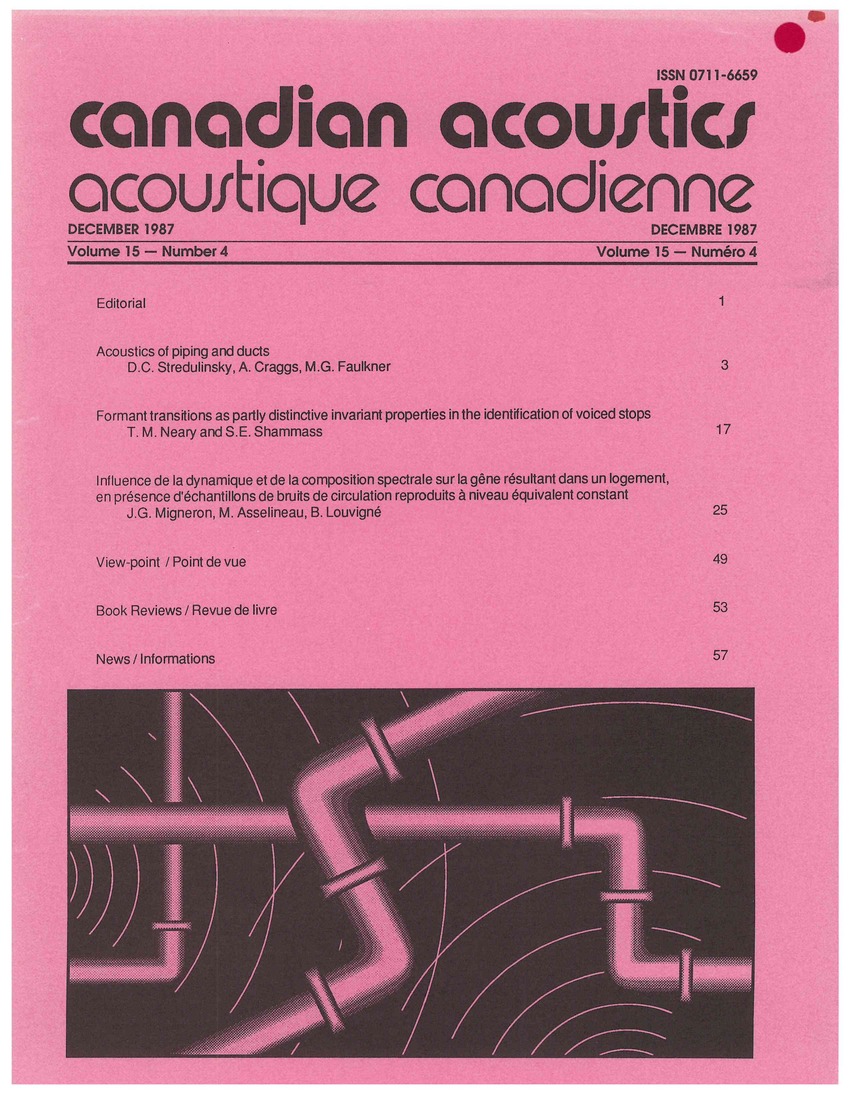Formant transitions as partly distinctive invariant properties in the identification of voiced stops
Keywords:
speech analysis and processing, formant transitions, speech analysis, partly distinctive invariant properties, voiced stops, F2 trajectories, Canadian English, regression line, consonant, category regression lines, statistical classificationAbstract
The F2 trajectories for /b, d, g/ in /CVd/ syllables are often summarized by the initial F2 frequency (F2i) and that of the `steady-state vowel' (F2v). Trajectories were measured for 660 Canadian English/CVd/syllables (3 stops×11 vowels×10 speakers×2 repetitions). Plots for each stop (vowels pooled) indicated a strong linear relationship between F2i and F2v. A regression line fitted to each plot represents an invariant relational property of the corresponding consonant. F2 trajectories are not sufficient to specify the stops uniquely, since the lines for the three consonants intersect (indicating category overlap). However, the slopes and intercepts for the three consonants are distinct and thus represent partly distinctive invariant properties or partial invariants. Similar patterns obtain for F3. Use of partial invariants of F2/F3 trajectories in a classification algorithm (based on minimum distance from category regression lines) result in an identification rate of over 70%, which compares favorably with a number of other statistical classification schemes. Possible extensions of this approach and relationships to aspects of perception are discussedAdditional Files
Published
How to Cite
Issue
Section
License
Author Licensing Addendum
This Licensing Addendum ("Addendum") is entered into between the undersigned Author(s) and Canadian Acoustics journal published by the Canadian Acoustical Association (hereinafter referred to as the "Publisher"). The Author(s) and the Publisher agree as follows:
-
Retained Rights: The Author(s) retain(s) the following rights:
- The right to reproduce, distribute, and publicly display the Work on the Author's personal website or the website of the Author's institution.
- The right to use the Work in the Author's teaching activities and presentations.
- The right to include the Work in a compilation for the Author's personal use, not for sale.
-
Grant of License: The Author(s) grant(s) to the Publisher a worldwide exclusive license to publish, reproduce, distribute, and display the Work in Canadian Acoustics and any other formats and media deemed appropriate by the Publisher.
-
Attribution: The Publisher agrees to include proper attribution to the Author(s) in all publications and reproductions of the Work.
-
No Conflict: This Addendum is intended to be in harmony with, and not in conflict with, the terms and conditions of the original agreement entered into between the Author(s) and the Publisher.
-
Copyright Clause: Copyright on articles is held by the Author(s). The corresponding Author has the right to grant on behalf of all Authors and does grant on behalf of all Authors, a worldwide exclusive license to the Publisher and its licensees in perpetuity, in all forms, formats, and media (whether known now or created in the future), including but not limited to the rights to publish, reproduce, distribute, display, store, translate, create adaptations, reprints, include within collections, and create summaries, extracts, and/or abstracts of the Contribution.


